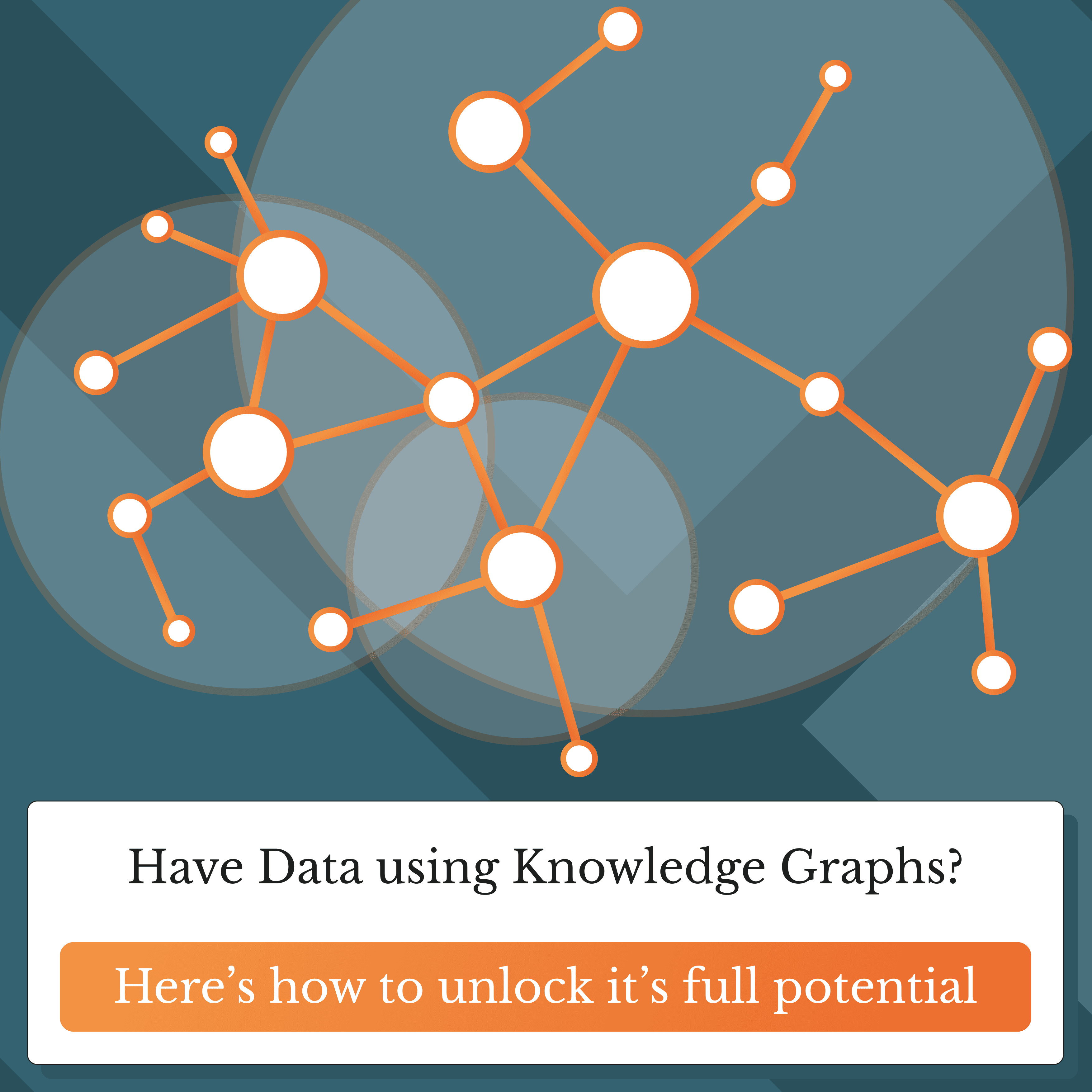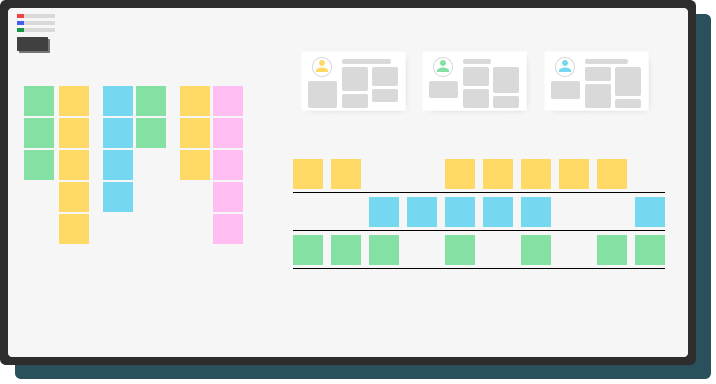
July 25, 2023
Unlocking the potential of your Data using Knowledge Graphs
Subham Kundu
At Caravel Labs we have been continuously improving our AI capabilities, and this serves as a paper from one of our engineers about that subject.
In today's data-driven world, enterprises are constantly seeking innovative ways to extract meaningful insights from their vast and diverse data sources. One such groundbreaking solution is the Knowledge Graph, a transformative technology that promises to revolutionize data management and analysis. By providing a logical layer that offers a holistic, curated view of data from various sources, the Knowledge Graph enables organizations to gain deeper insights and make more informed decisions. If you belong to Fintech, Knowledge Graphs can revolutionize your operations in multiple ways. You can leverage Knowledge Graphs to gain valuable customer insights by connecting transaction data, behavioural patterns, and preferences, enabling personalized financial services and cross-selling opportunities. Risk management becomes more effective with integrated data from market trends, regulatory information, and historical risk assessments, facilitating real-time risk analysis and decision-making. If you belong to the medical field, Knowledge Graphs offer transformative possibilities for patient care. By connecting medical records, treatment history, and clinical research, healthcare professionals can provide personalized and more effective healthcare services. Drug discovery efforts can benefit from integrated biomedical data, such as genomics and proteomics, speeding up the identification of potential drug candidates. Accurate disease diagnosis and treatment planning are facilitated by linking symptoms, patient characteristics, and diagnostic information. If you are in the IT solutions domain, Knowledge Graphs can be harnessed to streamline data integration and enhance knowledge sharing. By creating interconnected views of diverse data sources, IT solutions providers can offer more sophisticated and insightful services to their clients. Knowledge Graphs can also empower businesses to optimize resource allocation, improve operational efficiency, and support data-driven decision-making across various industries. Knowledge Graph can be an excellent knowledge layer for your developers, engineers as well as your technicians.
In all these domains, Knowledge Graphs present limitless opportunities for modernizing enterprises. By leveraging the power of interconnected data and sophisticated ontologies, organizations can unlock valuable insights, foster collaboration, and drive innovation in the dynamic landscape of modern business. Embracing Knowledge Graphs can lead to transformative outcomes and position enterprises as industry leaders in the era of data-driven decision-making.
Picture a world where complex business data from diverse domains is seamlessly interconnected, empowering organizations to make better-informed decisions. This is precisely the power of Knowledge Graphs. As a dynamic, interconnected network of entities and relationships, the Knowledge Graph bridges the gap between data consumers and various data sources. It unlocks valuable insights by facilitating a comprehensive understanding of the information, far surpassing the limitations of conventional data structures.
The graph in Fig 1.1 is a simple graph showing two type of nodes (in simple terms entities) students and books, and the graph shows which student have borrowed a book. The graph is very simple but now imagine it to be 1000 books and 100 students and there is other relation like rating, comments too. It is very clear for the person who have developed it, but once the person leaves and you hire a new developer it will be a nightmare for that person to understand the logic from scratch. Everyone knows how automated CI/CD pipeline have removed the responsibility from a single person deploying software into production in that way knowledge graph abstracts that software logic. Knowledge graph is basically regular graph integrated with organizing principle.
The difference between a Knowledge Graph and a regular graph lies in the way information is organized and interpreted. Unlike traditional graphs, where the interpretation is encoded into the querying systems, the Knowledge Graph incorporates the organizing principle directly into the data itself. This self-descriptive layer enhances both human and software agent comprehension, making it easier to explore hidden relationships and patterns within the data.
Even with capable in-house IT teams, enterprises can benefit tremendously from adopting Knowledge Graphs. This technology breaks down data silos, fostering collaboration and knowledge sharing among different departments. IT teams can leverage Knowledge Graphs to streamline data integration, improve data discovery, and enhance data quality. Moreover, the use of Knowledge Graphs reduces reliance on complex algorithms and empowers data-driven decision-making, resulting in increased operational efficiency. Following the example of student and books this is a typical knowledge graph:
Fig 2: A Knowledge graph showing Library Administration
From the above knowledge graph, we can easily deduce conclusion without depending on library enterprise management software:
-
We can find out when a book was borrowed as well as returned.
-
Books and Students belong to which library.
-
The books can be easily filtered due to the ISBN number using a scanner.
These are some of the direct conclusions, but you can deduce much more detailed insights too such as:
-
Student 1 returning Book1 in two days which kind of signifies the student did not like the book. One may argue that the student does not love reading books, but we can easily see the student have visited library 6 times which means the student loves to read.
-
Similarly, the student 2 lives 10km away from library which can be a potential reason why he/she hasn’t returned the book.
This was a very simple demonstration, but it signifies the endless possibilities of Knowledge Graphs. Library administrators can optimize book placements, restocking, and staffing based on real-time data from the Knowledge Graph. This results in a more organized and efficient library system. The interconnected data in the Knowledge Graph enables library administrators to analyse borrowing patterns, identify popular genres, and make data-driven decisions to improve the library's collection and services.
Central to the implementation of Knowledge Graphs is the use of ontologies. Ontologies are basically the equivalent of data models in software development. These generalized data models capture essential characteristics and relationships between entities, making knowledge actionable. By converting these ontologies into Knowledge Graphs, enterprises can reason about complex scenarios, unlocking valuable insights that drive innovation and optimize processes. Whether it's product classification in retail or customer segmentation in marketing, Knowledge Graphs powered by ontologies can deliver transformative results.
As the adoption of Knowledge Graphs gains momentum across industries, becoming an expert in their implementation becomes a strategic advantage for professionals in the enterprise space. Understanding the transformative power of Knowledge Graphs and their ability to turn complex data landscapes into insightful connections opens the door to new opportunities and improved decision-making. By combining domain knowledge with technical expertise, you can steer your organization towards data-driven success, shaping a more efficient and insightful future.
In conclusion, the potential of Knowledge Graphs transcends industries, empowering enterprises to gain deeper insights from their data and make better decisions. By adopting this transformative technology, organizations can overcome data silos and foster collaboration among teams. As a business leader in your organization, this technology will unlock the tremendous potential of your organization's data. Furthermore, transforming your data into a Knowledge Graph can be an excellent starting point for creating your own Large Language Model (LLM), as these graphs can be used by the LLMs to gain context and answer queries. Knowledge graphs will also save you a fortune because they compress your document data, which in turn will save your embedding cost. Embrace the possibilities, and the world of Knowledge Graphs will open up a realm of opportunities for you and your organization.
If you are thinking of implementing Knowledge Graphs in your organization, we at Caravel Labs are always ready for a discussion. Our team of experts is dedicated to helping you unlock the full potential of your data through cutting-edge Knowledge Graph solutions.

© 2023 Caravel Labs - All rights reserved.
